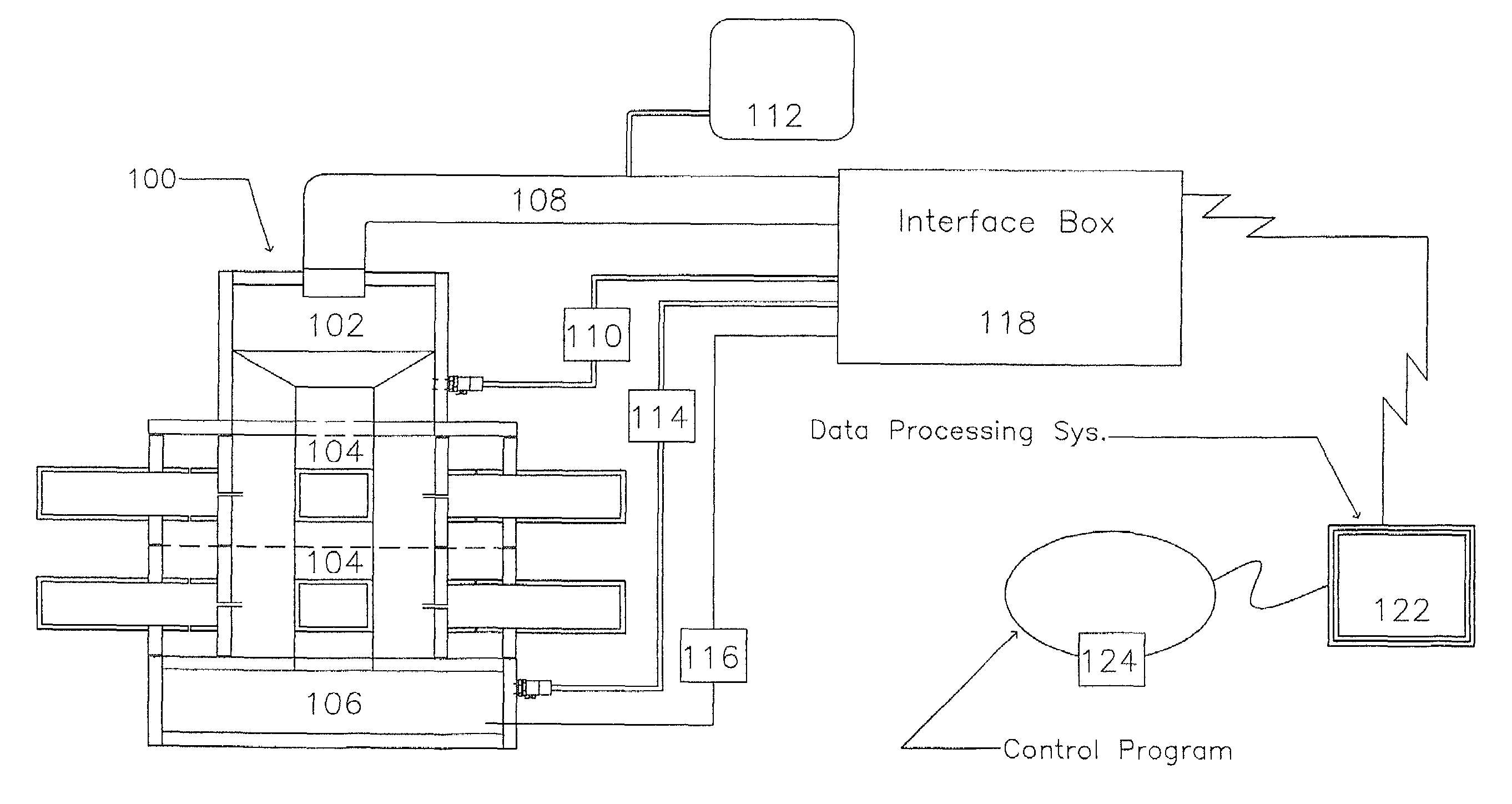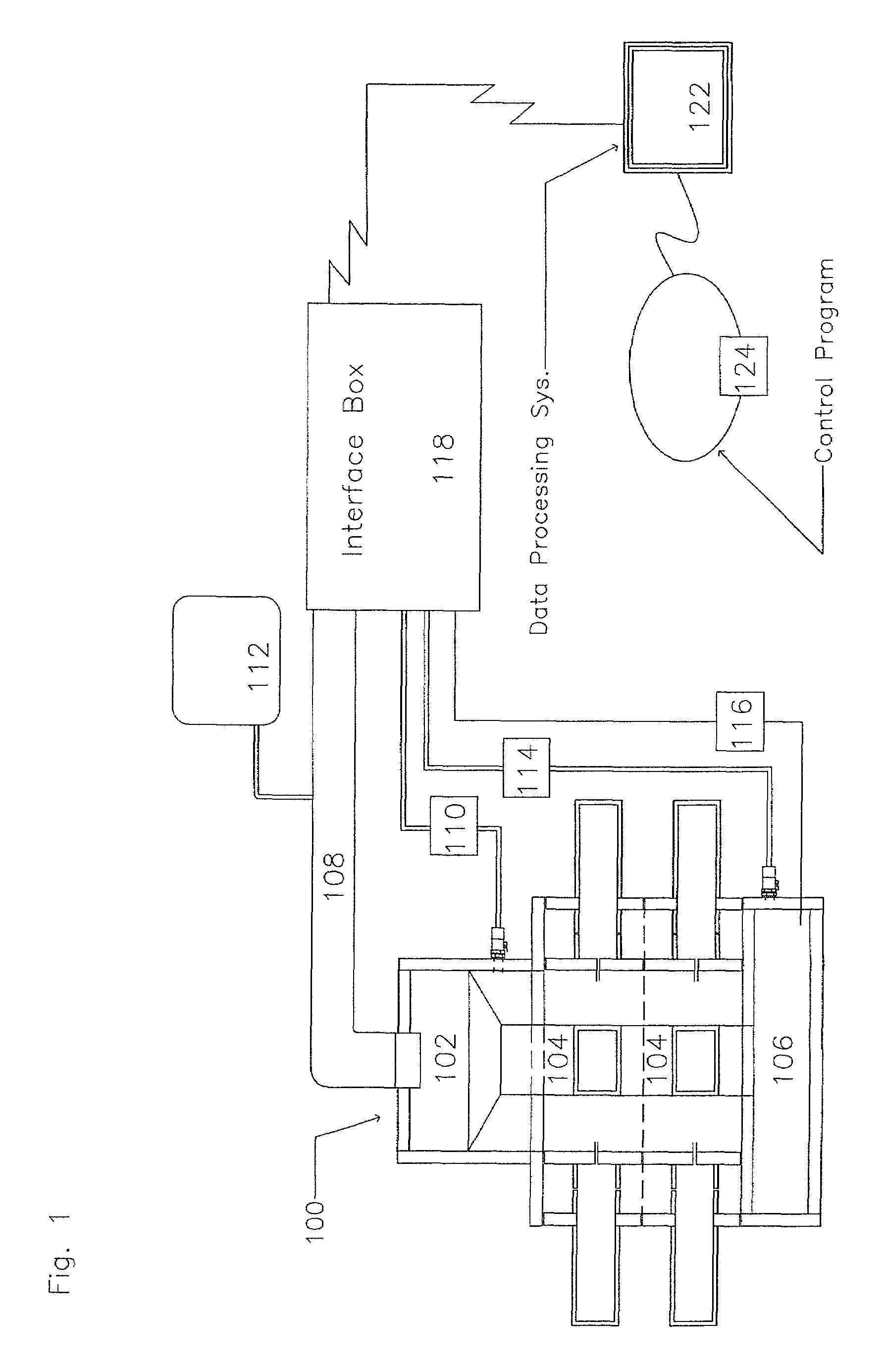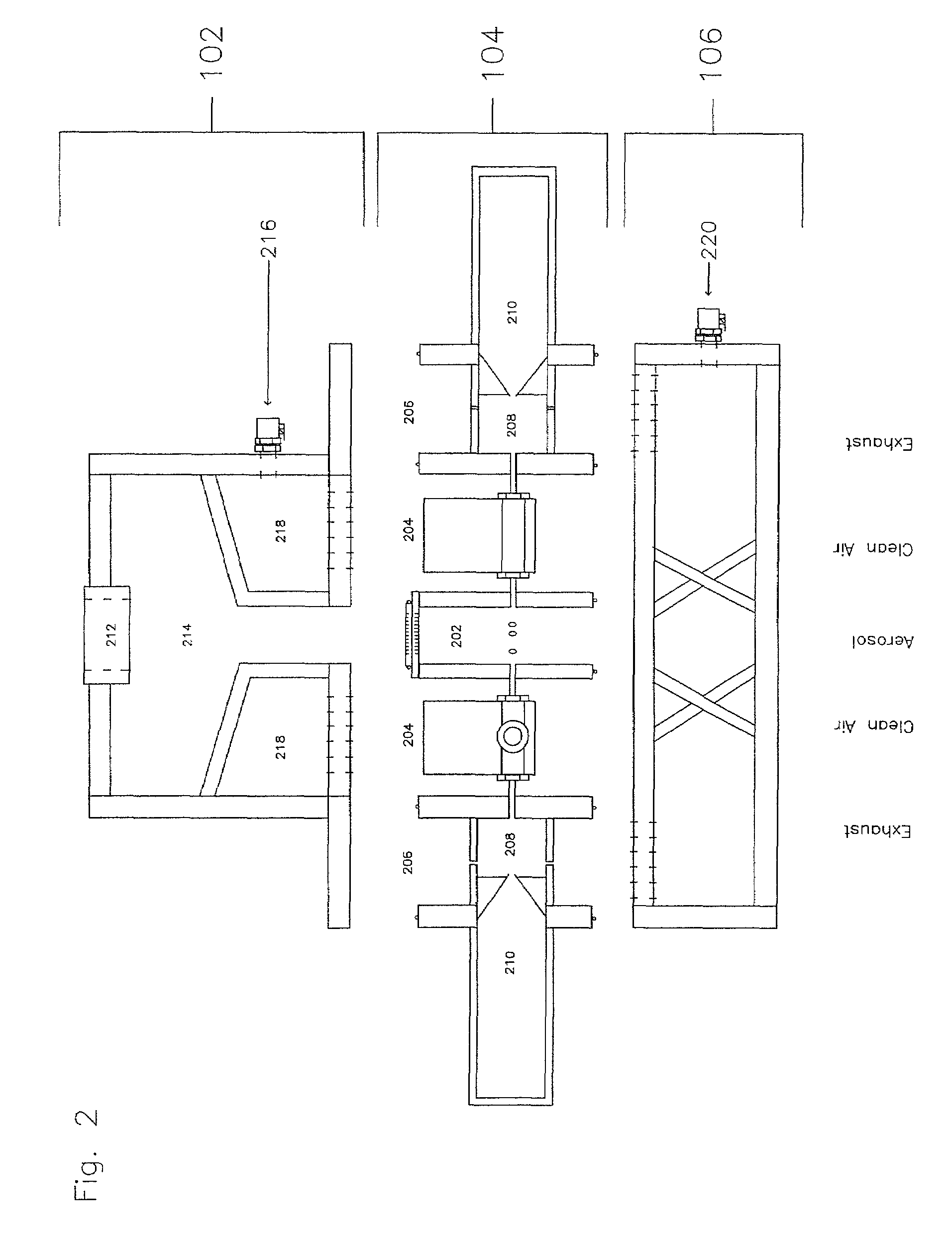Automated inhalation toxicology exposure system and method
a toxicology and inhalation system technology, applied in the field of multianimal inhalation exposure systems, can solve the problems of not being able to automatically control the inhalation, not being able to provide for the conditioning of the inhalation environment, and related-art multianimal inhalation system not being able to provide for the different exposure durations
- Summary
- Abstract
- Description
- Claims
- Application Information
AI Technical Summary
Benefits of technology
Problems solved by technology
Method used
Image
Examples
Embodiment Construction
A. Devices
[0026]A high level pictographic representation of an exposure system and associated hardware is included as FIG. 1. Depicted is exposure tower 100 composed of three distinct sections: input module 102, exposure modules 104, and exhaust module 106. Shown connected to the input module are inhalent air input hose 108 and clean air input hose 110. Integral with inhalent air input hose 108 is inhalent dissemination device 112. Inhalent dissemination device 112 is meant to be indicative of a variety of different devices for dispersing organic or inorganic substances in an aerosol, gas, fume, dry powder, or other suitable form. Connected to exhaust module 106 is output air hose 114. Shown coupled to exposure tower 100 is also wire bundle 116, meant to be indicative of a plurality of wires connecting a variety of electronic devices housed in exposure tower 100 to interface box 118. Operably coupled to interface box 118 are also inhalent input air hose 108, clean air input hose 110...
PUM
 Login to View More
Login to View More Abstract
Description
Claims
Application Information
 Login to View More
Login to View More - R&D
- Intellectual Property
- Life Sciences
- Materials
- Tech Scout
- Unparalleled Data Quality
- Higher Quality Content
- 60% Fewer Hallucinations
Browse by: Latest US Patents, China's latest patents, Technical Efficacy Thesaurus, Application Domain, Technology Topic, Popular Technical Reports.
© 2025 PatSnap. All rights reserved.Legal|Privacy policy|Modern Slavery Act Transparency Statement|Sitemap|About US| Contact US: help@patsnap.com



